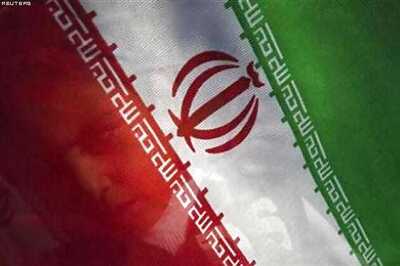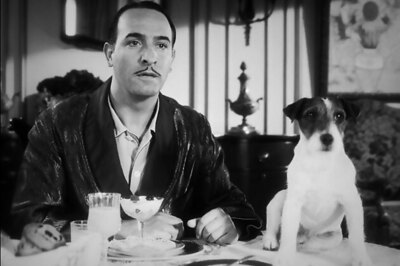
views
window._taboola = window._taboola || [];_taboola.push({mode: 'thumbnails-a', container: 'taboola-below-article-thumbnails', placement: 'Below Article Thumbnails', target_type: 'mix' });Latest News
Inevitably, the march of time throws up social reformers and revolutionaries. Among a galaxy of them in Kerala, Ayyankali holds a unique place. He was born on August 28, 1863 (under ‘avittom nakshathram’) at Perunkattuvila in Venganoor, in Thiruvananthapuram district.
Ayyankali got his name from his father and goddess Kali. His father’s name was Ayyan. His parents affectionately called him Kali. It was one name that made history in erstwhile Travancore. To this day, it remains an inspiration to fight against discrimination on the grounds of caste.
In those days, the Dalits were denied the right to free movement. Oppressed to the extreme, they were frightened to move around freely. This saddened and angered the youthful Ayyankali. One day, he procured a ‘villuvandi’ (a bull-driven cart) and hung a golden-hued bell which would reverberate loudly on the run. Clad in a half-sleeve ‘baniyan’ and crowned with a headgear, he rode freely through the streets. It needed extraordinary courage to do so in those days.
Note that the Dalits of his time tied towels around their waist to announce their servility and never wore headgear. His appearance and behaviour were construed as acts of defiance and raised the eyebrows among the privileged castes. Luckily, his opponents stopped with mere arguments, even though they appeared on the scene with lethal weapons. In fact, Ayyankali rendered them speechless with his question, “Dogs can walk in the streets. Why can’t the humans?” His argumentative skill saved the day for him. He so timed the episode that it occurred just before the Maharaja’s journey from Padmanabhapuram palace at Thuckalay to the city of Padmanabhan.
However, his and his followers’ ventures in free movement were not always cake-walks. In 1899, he and his caravan were waylaid and beaten up at Saliyar Street in Balaramapuram. This resulted in flare-ups in places like Manacaud, Kaniapuram and Kazhakkoottam.
Most of the Dalits of his place and time worked as agricultural labourers. They were landless peasants whose lot was no better than
that of bonded labourers. Moved by their untold suffering despite back-breaking work done by them, Ayyankali exhorted them to eke out a living from other sources till their demands for higher wages, weekly holidays and dignity of labour were met. Heeding his call, they abstained from work in the paddy-fields in areas like Kandala, Kaniapuram and Pallichal and the agricultural belt from Mudavoorpaara to Vizhinjam. The strike lasted for a full year and it was the first of its kind in Indian history and heralded the fight for labour rights.
History has recorded that Ayyankali’s role model was Thycaud Ayya Swamigal. He met Ayya at Pazhavangadi on July 13, 1909. Once, on the occasion of Thaipooyam, the Swamigal served the traditional Travancore ‘sadya’ on plantain leaves to Ayyankali along with the Brahmins. Ayyankali re-christened the rite as ‘panthibhojanam’ and re-enacted it in various places.
In 1905, Ayyankali led a procession of Dalits to behold the king in violation of the unwritten rule that the Majesty should not be beholden by ‘those of lowly birth.’ The processionists carried the photo of the king. From Putharikandam Maidan, they had a glimpse of the king’s ‘pujayedduppu ezhunnallathu’ and
rejoiced. But during their homeward journey, they were physically assaulted at Manacaud by goons.
Seeing his community living in the ‘darkness of illiteracy’, Ayyankali started a school in Venganoor. He knew that education is the key to liberation from poverty and indignity. He revealed his ‘mission in life’ to none other than Mahatma Gandhi himself. It was to see ten graduates from his community during his lifetime. The Father of the Nation was visiting the ‘Pulaya Raja’ in his native place in 1938 in the wake of the historic Temple Entry Proclamation of 1937 to congratulate him on the success of his tireless efforts for equality and uplift of his downtrodden community.
Importantly, Ayyankali was a member of the Dalit community whose emancipation he strove for and achieved to some extent. He was obviously someone like Nelson Mandela who represented the blacks of South Africa, not as an outside liberator, but as one of their own kin and like Dr Ambedkar nearer at home.
To attain his goal of Dalit liberation, in 1905, he founded the ‘Sadhu Jana Paripalana Sangham’. In recognition of his championing the cause of Dalits, he was nominated, in 1910, to Sree Mulam Praja Sabha, which he used as a forum to give voice to the voiceless.
The inevitability of death embraced this rare revolutionary of Kerala on June 18, 1941. On hearing about his demise, thousands of mourners thronged Venganoor to have a last, yet lasting, glimpse of their departed leader. The congregation was so huge that the mortal remains could be buried only on the fourth day. Finally, he was laid to rest in
Chithrakoodam, now a modest memorial at Venganoor. A life-size statue unveiled by Indira Gandhi at Vellayambalam Square perpetuates Ayyankali’s memory.
















Comments
0 comment